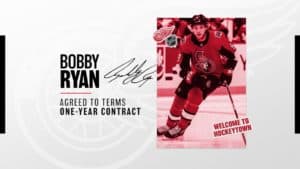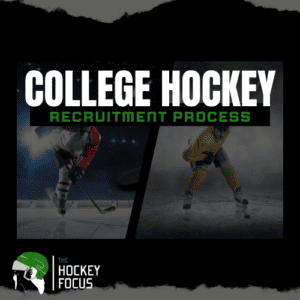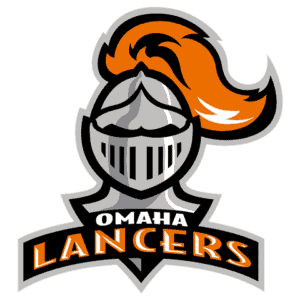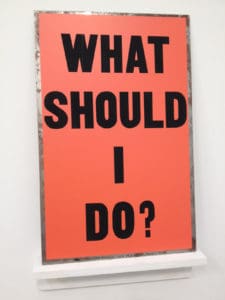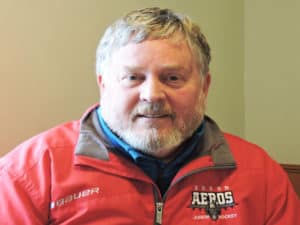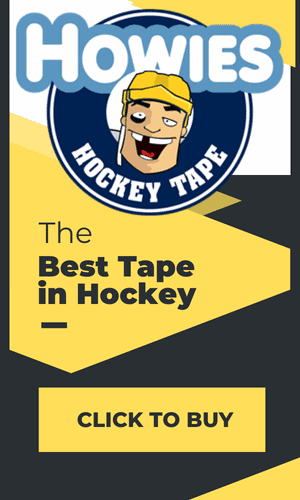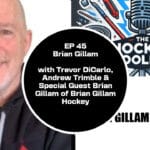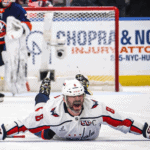Everyone knows “That Parent”.
The vocal, outspoken, authority who knows exactly what each and every individual athlete needs to reach the highest, most lofty goals they have set for their child in a particular sport. “That Parent” exists in every rink, in every fieldhouse, in every gym, in every town in North America.
Youth sports and the sport of ice hockey specifically, are filled with many misperceptions and poor calculations. Often these misperceptions are rooted in a perceived understanding of what a child’s needs are… rather than an honest assessment of what is best for the child. The consequences of chasing those misperceptions can be the direct path to failure.
With this article we will look at 5 Myths of Youth Hockey Development. These are common things that parents or peers will say when speaking about what their youth hockey player needs to get to the “next level”. In doing my research, I reference several books including, “Originals: How Non- Conformists Move the World” by Adam Grant, “The Power of Habit: Why we do what we do in Life and Business” by Charles Duhigg, “Spark: The Revolutionary New Science of Exercise and the Brain” by John Ratey, “Outliers: the Story of Success” by Malcolm Gladwell and “The Sports Gene: Inside the Science of Extraordinary Athletic Performance” by David Epstein. I also would highly recommend the 2018 film “In Search of Greatness” directed by Gabe Polsky.
This article is not intended to offend anyone. Rather the intention is to think of what we see or hear in our local rink and apply them to our child rationally. To make sure that we are not chasing an elusive dragon, but rather assist our child in creating and forging their own pathway.
So here we go…
MYTH #1- MORE IS MORE
In Malcolm Gladwell’s bestseller he utilizes the “10,000-Hour Rule”, based on a study by Anders Ericsson. Gladwell describes a setting where masters in their field of study dedicate an enormous amount of time to a chosen craft, and enhance and hone a skill over thousands of hours (around 10,000) before they become elite-level.
Gladwell references the Beatles’ musical talents as an example. As many know, The Beatles were a English band who had the unique mentorship experience of travelling to Hamburg, Germany over 1,200 times from 1960 to 1964, amassing more than 10,000 hours of live in person playing time. Honing their skills through practice,
repetition and group effort, Gladwell asserts that all of the time the Beatles spent performing shaped their talent. Gladwell further explains that to reach the 10,000-Hour Rule, is a matter of practicing a skill repeatedly over and over for a long period of time. Equivalent to 20 hours of work a week for 10 years.
Parents too often, however, take this information and immediately apply it to their own child, forcing their child to run before they can walk. They see the future of their child through the lens that they have created for them. I would assert that More is More, only when More feels to the child like Less. Each and every child is different, and mentally the young athlete sets the timeline. More practice isn’t better when the young athlete isn’t fully engaged in the process. As Wayne Gretzky said, “The only way a kid is going to practice is if it’s total fun for him… and it was for me.”
So parents and coaches please, slow down the process. If your practice is an hour long and kids are gassed when they go home and do not want to go to practice the next day, make your practice 45 minutes long with free time or games at the end, so kids are hungry and excited to come back for the next practice. If your organization practices 3 times a week and your child only wants to go to 2 practices a week because they want to try basketball on the 3rd night, let them try basketball. If they love hockey, they will do a mental comparison of the sports and be more excited for hockey practice because they tried something different that 3rd night. Avoid the grind…build and instill a love for playing the game.
MYTH #2 – THE NEW PRODUCT
Every few months we see it. Inventions and creations that can assist your young player in getting to the next level. Super-Dekers, synthetic ice, treadmills, danglers, Hockey video games, Rollerblades, Ric-O- Chets… they all have a name. They all are great products, but only when they are used.
In Charles Duhigg’s book “The Power of Habit: Why we do what we do in Life and Business”, he writes extensively on creating habits and cues that hard wire the brain for long term success. On page 51 he writes;
To understand the power of cravings in creating habits, consider how exercise and habits emerge. In 2002 researchers at New Mexico State University wanted to understand why people habitually exercise. They studied 266 individuals, most of whom worked out at least three times a week. What they found was that many of them had started running or lifting weights almost on a whim, or because they suddenly had free time or wanted to deal with unexpected stresses in their lives. However, the reason they continued- why it became a habit- was because of a specific reward they started to crave.
Products and services for your young athlete are great. They can be fun, unique ways to jump start a routine or training period. Yet, nothing will get your child to practice more or practice harder than instilling a passion for the game. Once your child finds out that they LOVE hockey, and feels the rewards of self- improvement, their game will take off more than any device or contraption ever made.
MYTH #3- PLAYING AT THE HIGHEST LEVEL
Joe Mullen was born in Hell’s Kitchen New York City in 1957. He roller skated at 5 years old in concrete jungles in an area that was controlled by the Gambino Crime Family. He didn’t skate till he was 10 years old, and played his first organized or “high level” hockey at age 14 when he joined the Metropolitan Junior Hockey Association.
Many young players who look up to current US stars like Patrick Kane, Jack Hughes, Austin Matthews, probably never heard of Joe Mullen. Yet, Joe Mullen won as many Stanley Cups as all three of the aforementioned US players (3) and scored 1063 points during his NHL career.
We all have heard and seen it. The parents who pull their child out of the local town program and spend thousands of dollars on the “Elite” program. The parents who decline summer vacations, instead choose to live at rinks all over North America so that their child can play in another “showcase”.
Every child is different and every parents situation is different. There is no one singular pathway to the NHL. Rather, each NHL player’s pathway is paved through passion, success, hard work and mastering the level they were at before moving onto the level above their current level. As I often have heard said, “ there are only ladders to success, not escalators.”
Take for example Ed Jovanovski. Jovanovski played 1128 NHL games. He was the #1 pick in the NHL draft, and won a Gold medal with Canada at the 2002 Olympic Winter Games.
Jovanovski didn’t play organized hockey until he was 11 years old. Jovanovski, in speaking about his draft experience, “I think at the time I probably said what a lot of kids say, which is that it doesn’t matter where you get drafted, it’s just an opportunity to get your foot in the door of the NHL. But for me, I think it’s deeper than that. From where I came, from just starting hockey at 11 years old and then being the top pick in the draft six years later, it was definitely a pinch-me moment. Everything came so quick.”
What if Jovanovski’s parents had said to him when he was 10, “it’s not worth it to try hockey, because to get to the NHL you have to play AAA by the time you are a Pee Wee.”?
What if they had said, “We can’t sign you up for hockey… these kids are so much better than you right now.”?
Every player is different. Every player has a different pathway. There is no one way to get to the level which your child desires to achieve. Instead, the one way to ensure success is; instilling passion and a love for playing the game, and then improving to the point where you have exceeded the level you are at.
MYTH #4- THE GLORY DAYS
In fact I think I’m going down to the well tonight
And I’m gonna drink till I get my fill
And I hope when I get old I don’t sit around thinking about it
But I probably will
Yeah, just sitting back trying to recapture
A little of the glory yeah
Well time slips away and leaves you with nothing, mister, but
Boring stories of Glory Days – Bruce Springsteen 1984 “Glory Days” Things that are old are not necessarily better, and things that are new are not necessarily improved. This can be said in life and in hockey.
Bobby Orr and Wayne Gretzky revolutionized the way hockey was played, by developing through countless hours of practice on frozen Canadian ponds. They were Canadian players who played untraditional games for the time. Holding onto the puck for long periods of time, playing non-linear styles that maximized the entire sheet of ice, and possessing a superior ability to play away from the puck…a skill that was almost assuredly developed within unstructured games.
Mario Lemieux and Eric Lindros took physicality to a new level. Both were giants compared to their peers, possessing a unique blend of superior skill and size. Their raw physical ability introduced the prototype, where athletes in the sport of hockey could have an advantage or perceived advantage with added height and weight.
The new generation of NHL superstars are a unique blend of sizes, but possess development and enhanced skills that are very much in line with the times. Patrick Kane, Sidney Crosby and Connor McDavid have almost unthinkable puck skills. Their eye-hand coordination, reflexes, and explosiveness allow them to do routinely what players in the past could not dream of. Skill coaches, the power of video and technology have helped them achieve greatness. They think fast and play faster than ever before.
In Adam Grant’s book “Originals: How Non- Conformists Move the World”, he writes in chapter 7 about the principle of GroupThink, “the practice of thinking or making decisions as a group in a way that discourages creativity or individual responsibility”. He cites several examples of leadership in which they missed innovation and
investment opportunities because of an inability to problem solve away from the group dynamic. On page 197 he writes;
This seems like a wise philosophy for leaders. We don’t want people to stop at complaining; when they see something wrong, they ought to take the initiative to fix it. As a management researcher Jeff Edwards advises, if you’re going to tell the emperor he has no clothes, you’d better be a good tailor. And extensive research shows that leaders do react more positively when employees bring solutions rather than problems to the table.
This ideal should be applied to hockey. What worked for one athlete 40 years ago might not work tomorrow. What works for athletes right now, may not work for athletes 40 years from now. There is no cookie cutter solution to youth hockey development because it worked for one particular player. Innovation, analysis and assessment allow athletes, coaches, administrators and organizations to grow. That is how we keep improving our game.
MYTH #5 – HINDERING DEVELOPMENT
You’ve all heard it.
“If Johnny doesn’t play with the best players it’s really gonna hurt his development”. Or this one.
“If Johnny doesn’t play on the summer team, it’s really gonna hurt his development.”
Pavel Datsyuk was born on July 20, 1978 in Yekaterinburg, Russia. He was often overlooked because of his smallish size. Pavel played 5 years in the Russia Pro League’s for two different teams, never averaging over a point a game in any season, yet he developed into a solid two-way player. He went unchosen in the 1996 and 1997 NHL entry drafts, eventually chosen in the 6th round of the 1998 draft when he was a 20 year player, by Hakan Andersson, the Director of European Scouting for the Detroit Red Wings. Datsyuk was eyed by Andersson when he was sent to Russian to evaluate a player on the opposing team. Hakan Andersson, however, reported back to the Wings that there was “a little guy on the other side of the ice” worth seeing again.
In the 1998 NHL entry draft 21 of the 27 players chosen played in one of the 3 leagues within the CHL (WHL, OHL & QMJHL). Pavel Datsyuk never played a minute of hockey in the CHL, yet is generally regarded as the top player chosen in the 1998 draft.
In John Ratey’s book, “Spark: The Revolutionary new science of exercise and the brain,” he takes a fundamental look at how the brain processes information. On page 39 he writes:
Learning requires strengthening the affinity between neurons through a dynamic mechanism called long-term potentiation (LTP). When the brain is called on to take in information, the demand naturally causes activity between neurons. The more activity, the stronger the attraction becomes, and the easier it is for the signal to fire and make the connection. The initial activity marshals existing stores of glutamate in the axon to be sent across the synapse and reconfigures receptors on the receiving side to accept the signal. The voltage on the receiving side of the synapse becomes stronger in its resting state, thereby attracting the glutamate signal like a magnet. If the firing continues, genes inside the neuron’s cell nucleus are turned on to produce more building material for the synapses, and it is this bolstering of the infrastructure that allows the new information to stick as a memory.
We’ve all seen athletes plateau. For whatever reason, they excelled at a certain age and certain level, but did not push through and progress. The same can be said for coaches. Maybe their message worked for Midget- aged players, but the same knowledgeable coach is struggling to get the most out of his new team, perhaps a Bantam or Pee Wee aged team.
Finding a way to communicate and innovate is critical. Youth players have to be given a platform where they can think and process information that stretches them beyond their comfort zone, but is still understandable and relatable to them. They have to be able to “Get It”. For youth coaches it is very much the same. They may have to change how they are communicating in order to provide a hard understanding of what they are communicating.
These concepts play into the idea of what is really “hindering development”… and the misinformation is one of the single biggest challenges of developing hockey players. If you are practicing the same drills over and over in order to perfect that specific drill, but not seeing the results in the long term benefits for your athletes, maybe it’s time to try something new. Screaming and politics definitely won’t solve it. Youth hockey development, and long term athletic development is an evolving science. Cut through the BS and find the truth. If you someone is telling you, you have play in a certain league for a certain program, but you’ll be sacrificing the ice time, puck touches, and relationships offered in another program, maybe you need to ask yourself, “What will get me better 5 years from now?”.
Andrew Trimble is the General Manager and Co- Owner of the New England Wolves Hockey Club. He is also the Owner of Scoring Concepts LLC, a New Hampshire based hockey training company that of ers camps, clinics, private lessons and teams. He has coached at all levels from Learn to Skate to College Hockey. For more info on his teams and programs check out- www.scoringconcepts.com or www.ne-wolveshockey.com

